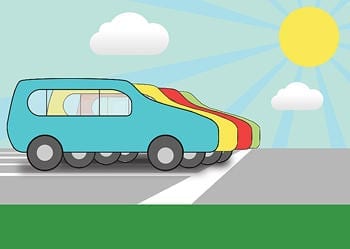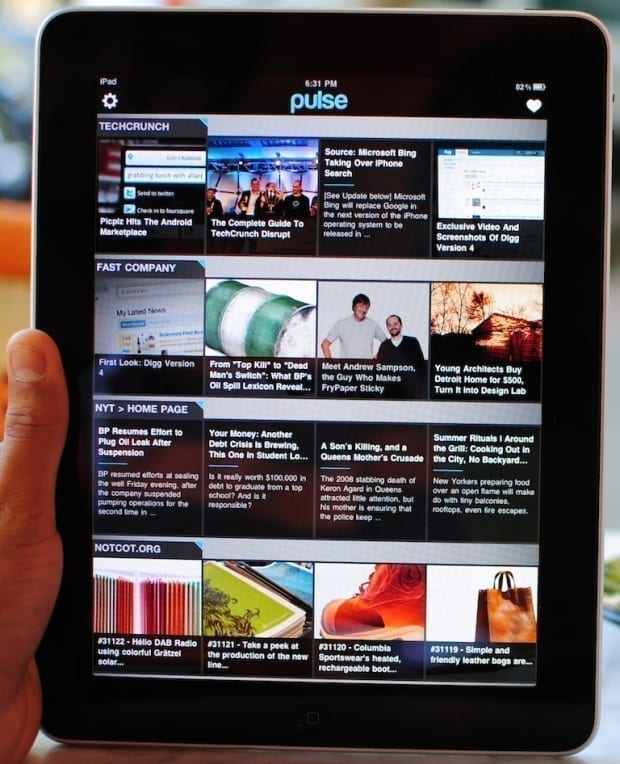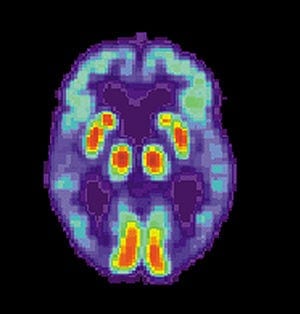
Need a car, but don’t want the hassle of owning one?
Today, there are many services to help you get around this jam, including traditional car-rental companies, taxis, and car-sharing programs such as Zipcar and Greenwheels. But what if you want to drive a car without the inconvenience of having to return it to your starting point?
That’s where a concept called “mobility on demand” comes in. Essentially a one-way vehicle-sharing system, mobility on demand typically consists of a fleet of vehicles, parked in a network of stations, and available for short-term rentals. A driver can pick up a vehicle, and drop it off later at a station closest to his or her destination. Mobility on demand has gained traction in recent years as a convenient and sustainable form of transportation, primarily with bicycle-sharing programs like Hubway in Boston.
But adapting the concept to passenger cars has been more of a challenge. While there are a few one-way car-sharing programs on the road today — notably, Daimler’s Car2Go and BMW’s DriveNow — such programs bring significant logistical issues.
Chief among these, says Emilio Frazzoli, an associate professor of aeronautics and astronautics at MIT, is the issue of imbalance: During a typical day, the number of cars throughout a network shifts toward certain destinations. (Think of drivers commuting each morning from the suburbs to downtown offices.) As a result, these locations see a glut of cars, in turn depleting fleets at other stations.
Programs like Car2Go address this issue by employing drivers to rebalance the fleet, moving cars to high-demand locations. But as Frazzoli has found, the rebalancing drivers themselves then become unbalanced. What’s more, such rebalancing trips do not generate revenue, yet are an expense to the operator.
To rebalance the system, Frazzoli and his colleagues have developed a vehicle-routing algorithm that adds another component to the scenario: a driver who shuttles a car back to a station, but with a customer, much like a taxi service. The group’s algorithm determines the most efficient means of balancing taxi trips and shuttle trips while minimizing wasted trips.
Finally, to maintain stability within the system, and ensure that every customer has access to a car with minimal wait time, the researchers determined the most efficient number of vehicles and rebalancing drivers for a mobility-on-demand system. Their simulations indicate that at least one shuttling driver is necessary for every three vehicles in the fleet to ensure vehicle availability for the customers.
“What you need is some way to make the system self-balance,” says Frazzoli, who is a lead investigator in the Singapore-MIT Alliance for Research and Technology (SMART). “You need a car to be taken back to a place where customers are waiting. Car-sharing companies that are not ensuring high availability of vehicles may be using too few human drivers, or not rebalancing the vehicles efficiently.”
The group, which includes Daniela Rus, professor of computer science and engineering and director of MIT’s Computer Science and Artificial Intelligence Laboratory, as well as researchers from the University of Waterloo, Stanford University and Boston University, has co-authored a paper, which was presented this month at the annual conference of the American Automatic Control Council, in Washington.
Driving with others
In working out a rebalancing strategy, the researchers simulated an idealized mobility-on-demand system. They randomly placed 10 to 200 stations throughout a grid, and assumed that the paths between stations were straight.
To develop the vehicle-routing algorithm, the group factored in a range of variables: the number of customers, drivers and vehicles at a given station; the rate at which customers arrive at and depart from a station; travel time between stations; and the rate of shuttling vehicles and drivers between stations. The group determined the fraction of customers who prefer to drive themselves, versus those willing to use a taxi service — an alternative that would allow a shuttling driver to drive a car back to a given station while earning a fare from a customer.
Taking into account all these variables, the researchers devised an algorithm that determines how the number of vehicles, customers and drivers evolve at each station. The group then ran simulations with the algorithm, programming in random arrival rates for each station, and random destination probabilities. They ran simulations of networks and observed the resulting flow of traffic.
From the simulations, Frazzoli and his team found that the minimum number of rebalancing drivers needed to keep a system balanced is equal to one-third the number of vehicles in the system. That fraction is reduced to one-fifth if several drivers are allowed to ride back to a station with a customer.
The Latest Bing News on:
Mobility on demand
- Abu Dhabi Mobility Signs a Memorandum of Understanding with Regent Crafton April 27, 2024 at 11:48 pm
Abu Dhabi on Friday, April 26, 2024- For the purpose of developing a sustainable maritime sector in Abu Dhabi, the Department of Municipalities and T ...
- New-age technologies paving the way for smarter and sustainable mobility solutionson April 27, 2024 at 8:32 pm
Technology-enabled shared mobility services such as ride-sharing, bike-sharing, and scooter-sharing platforms offer convenient and cost-effective transportation options.
- Ridesourcing platforms thrive on socio-economic inequality, say researcherson April 26, 2024 at 10:54 am
Platforms that offer rides to passengers, such as Uber and DiDi, thrive on socio-economic inequality. By modeling the behavior of passengers and self-employed drivers, researchers of TU Delft ...
- EQS-News: LION E-Mobility AG presents product roadmap and mid-term sales targets at virtual Capital Markets Dayon April 26, 2024 at 12:19 am
26.04.2024 CET/CEST Dissemination of a Corporate News, transmitted by EQS News - a service of EQS Group AG. The issuer is solely responsible for the content of this announcement. The EQS Distribution ...
- Mobility Bus offers on-demand personalized service for riderson April 25, 2024 at 1:34 pm
Personalized transit services will help Belleville riders who can book their trips through a new online portal. “When determining eligibility, we consider barriers that affect an individual’s ability ...
- Dubai's RTA Expands 'Bus On Demand' Service To Business Bayon April 25, 2024 at 12:35 pm
Dubai's Roads and Transport Authority (RTA) has expanded its 'Bus on Demand' service to Business Bay following a successful month-long trial, as per the planned roll-out of the initiative.
- The politics stopping the UK from opening a youth mobility scheme with Europeon April 25, 2024 at 9:29 am
Earlier this week, it seemed possible that young people in the UK might soon be able to travel freely to work and live in Europe again. The European Commission laid out proposals to open mobility to ...
- Three in four businesses failing to manage talent mobility effectively, as demand for international work experience soarson April 25, 2024 at 2:58 am
Companies around the world could be at risk of losing out in the race for talent and driving business resilience because they are failing to mobilize their workforce effectively and create ...
- Lockheed Martin beats Q1 expectations on strong demand, sees supply chain improvementon April 23, 2024 at 9:51 am
U.S. weapons maker Lockheed Martin beat Wall Street expectations for first-quarter sales and profit on Tuesday, as simmering geopolitical tensions prompted some countries to boost their defense ...
- BATA bus fleet goes electric, mobility lifts coming later this yearon April 23, 2024 at 8:33 am
BATA recently got four electric vans, and they’re looking forward to more equipped with mobility lifts later this year. BATA said the vans were purchased using state and federal grant funding, and ...
The Latest Google Headlines on:
Mobility on demand
[google_news title=”” keyword=”mobility on demand” num_posts=”10″ blurb_length=”0″ show_thumb=”left”]
The Latest Bing News on:
One-Way Car Sharing
- Harvey Weinstein hospitalised after conviction overturnedon April 27, 2024 at 8:32 pm
Disgraced movie mogul Harvey Weinstein has been hospitalised just days after his 2020 rape conviction in New York was overturned, his lawyer has said. Arthur Aidala said he was moved to a Manhattan ...
- Elon Musk just set Wall Street up for one of his classic head fakeson April 27, 2024 at 5:48 am
And Tesla's position in China, a country that has become critical to its future, is getting shakier.There's only one person to blame for the company's shambolic state and only one person whose exit ...
- I traveled between Canada and Seattle on a $64 car ferry and a $124 passenger ferry, and I wouldn't do the cheap option againon April 27, 2024 at 4:34 am
I traveled between Victoria, Canada, and Seattle, Washington by car ferry and passenger ferry to see which option was worth the money.
- Investing in Elevance Health (NYSE:ELV) five years ago would have delivered you a 118% gainon April 27, 2024 at 4:02 am
The most you can lose on any stock (assuming you don't use leverage) is 100% of your money. But on the bright side, ...
- Officers help deliver triplets on front porch of Greeley homeon April 26, 2024 at 8:50 am
Greeley police officers responded to a call of a woman who was screaming in her front yard during the early morning hours. Officers came to find out, the woman was in labor on the ...
- Google Thinks It Can Cash In on Generative AI. Microsoft Already Hason April 25, 2024 at 6:29 pm
While both Alphabet and Microsoft boasted strong quarterly earnings, only one tech giant showed that its generative AI bet is starting to pay off.
- ‘Something I wish I would’ve learned 15 years ago’: Woman reveals trick to quickly cool down your caron April 24, 2024 at 12:00 am
Banks says once you’re inside your vehicle, the first step is to “roll down the passenger-side window.” Next, she says to “take the opposite door and pump it.” She demonstrates this by opening the ...
- Toddler Insists on Kissing Each Toy Car Goodnight in Sweet Bedtime Routineon April 23, 2024 at 7:24 am
Most kids will kiss their family pet goodnight, or even their stuffed animals—but not Henry, who has to say goodnight to every toy car he owns instead.
- Forget Starbucks: The New Third Space Is Your Caron April 23, 2024 at 4:00 am
Just as automatic brakes were once installed only in high-end cars, the tech transforming the vehicle into a third space will eventually become ubiquitous.
- Smart ways to shop for used EVs, which now cost half as much as they did in 2022on April 22, 2024 at 11:53 am
Buying a car has been an expensive proposition in the last few years, but discounts on used electric vehicles have been a bright spot for the growing ...
The Latest Google Headlines on:
One-Way Car Sharing
[google_news title=”” keyword=”One-Way Car Sharing” num_posts=”10″ blurb_length=”0″ show_thumb=”left”]










